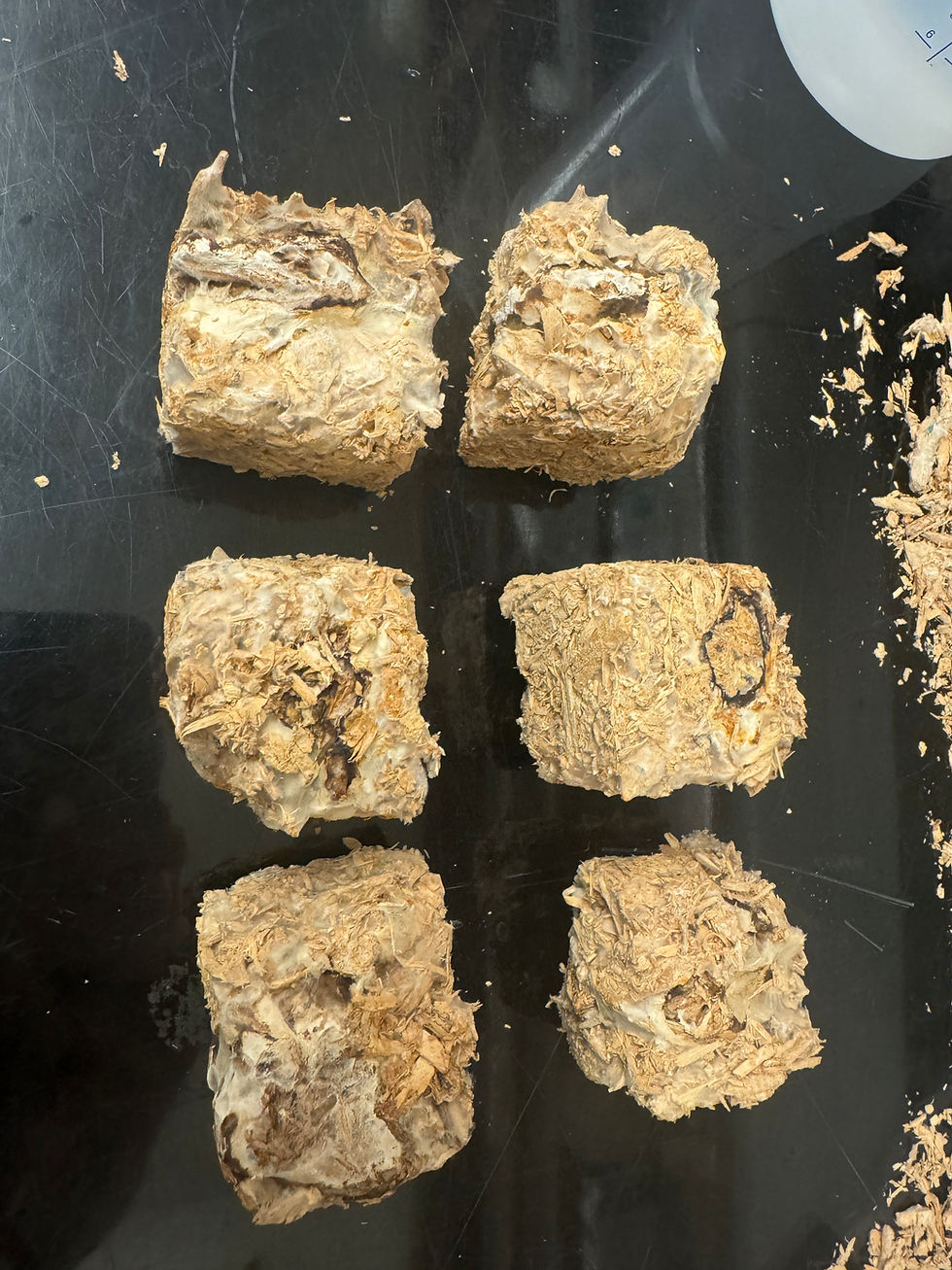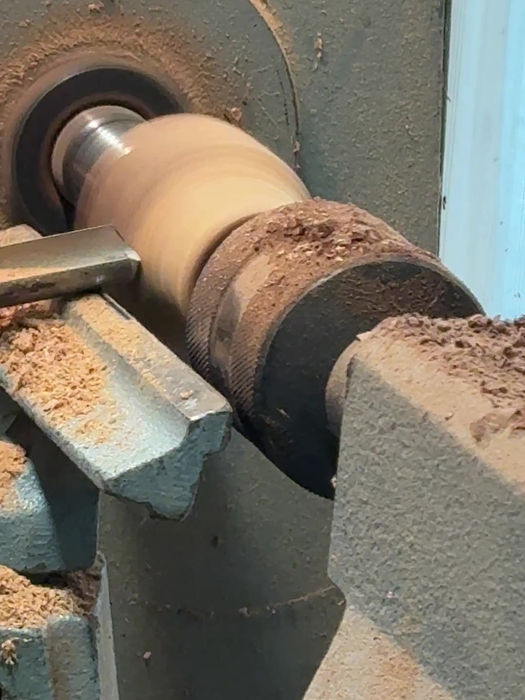
MYKOS
The Mushroom Substrate Team
Overview
Project Summary & Research Focus
This team experimented with combining different mushroom species in the development of mycelium bricks intended for construction use. The team is trying to analyze the microscopic structure of compressed bricks to gain a deeper understanding of the
changes that occur during compression. Additionally, they are exploring the integration of mycelial composites with Streptomyces bacteria for potential functional enhancements.
Our Goals

Experiment with the combination of various mushroom species in the creation of mycelial bricks designed for construction purposes.
01
Analyze the structure of compressed bricks to better understand the structural changes occurring. Test the bricks using fabrication tools to discover material usefulness.
02
Experiment with combining mycelial bricks with Streptomyces bacteria (in process).
03

Living Species Combinations
We wanted to know if living mixed species would stay mixed and coexist, offering material properties of both species. They chose to isolate themselves, as the dark walls here show.

Testing Material Properties
We explored what fabrication processes worked with our pressed mycelium composites.

Dead Species Combinations
Different bricks have different combinations, some by layering and others fully intermixed. We are testing for strength as well as water resistance for all combinations.
Our Conclusions
In Winter quarter, we wondered if we could optimize brick material properties by combining different species. Would they live and grow together over time? Or can we only combine them just prior to deactivation by baking?
As fabricators, we wanted to know what we can do with this material. So we cut, turned, nailed, screwed, pulled, pushed and smashed it.
The true shocker is the record-setting, stainless-steel bending behavior we found during the compression test. You can see this on the Mykobrick page.
While we need more time to tell, after we combined living reishi and trametes and let them grow, they seemingly built a wall between themselves.
When we combined crumbled spent mushroom substrate of two species just prior to compressing, the brick held together normally. But when we layered them before pressing, the layers did not bond and they broke off easily after baking.
One of the bricks we made set two career records for Dr. Valeria La Saponara, who did our compressive strength testing. It hit
30.32 MPa (megaPascals),
which is higher than any mycelium brick has tested yet, as far as we know.
This is amazing!
Our Research Team

Forest Sabath
2nd year Anthropology major
Proposed combining different species’ spent mushroom substrates to optimize brick material properties. Works in tandem with Echie and Swayam on experiments with spent mushroom substrate and on growing living substrate combinations of different species. Participated in pressing bricks.

Echie Cheung
1st year Design major
Works with Forest and Swayam to investigate how development time before compression affects properties of bricks. Aims to produce bricks that better meet needs of project by combining different types of species and arranging them in various ways.

Swayam Patel
3rd year Neurobiology, Physiology and Behavior major
With Echie and Forest, collaborates on cultivation of substrates and development of sustainable bricks. Prepares and adjusts substrate formulas, monitoring growth patterns of various mushroom species, and
analyzing how different combinations influence structural performance of final bricks. Also conducts tests to understand how varying growth period before compression affects durability and texture, aims to optimize bricks for specific project requirements. Cultivates Streptomyces bacteria to see if a hyphal layer can grow on surfaces.













